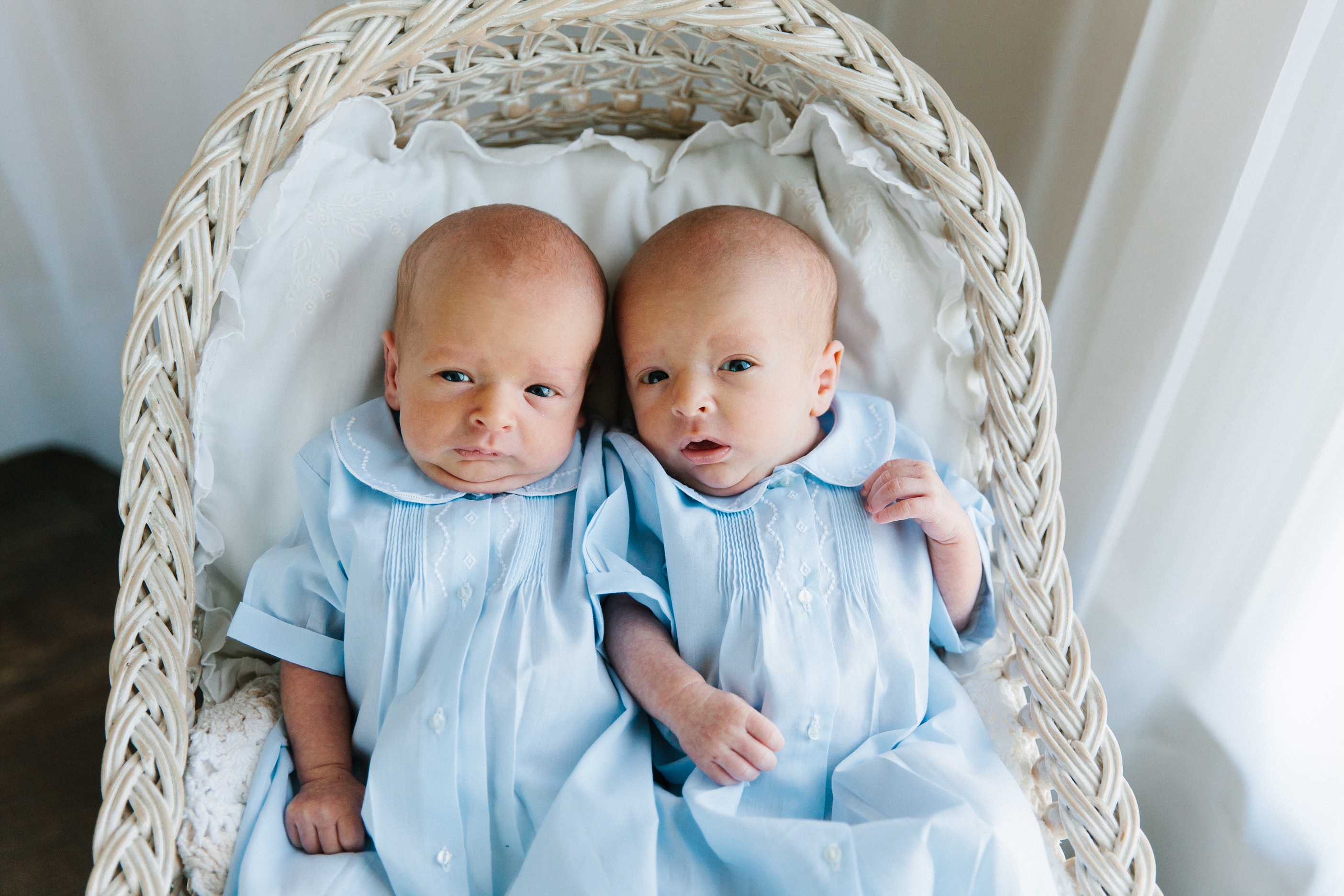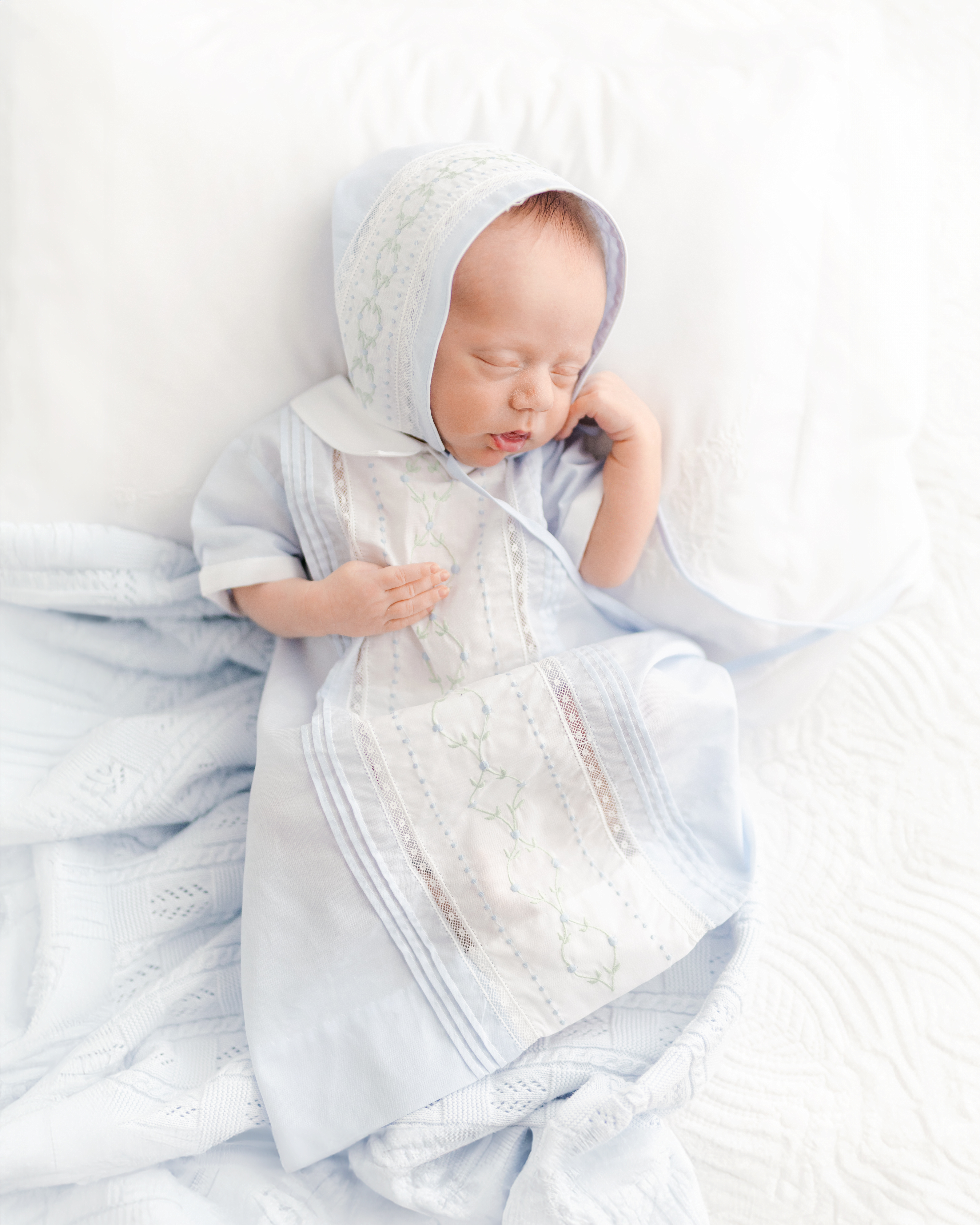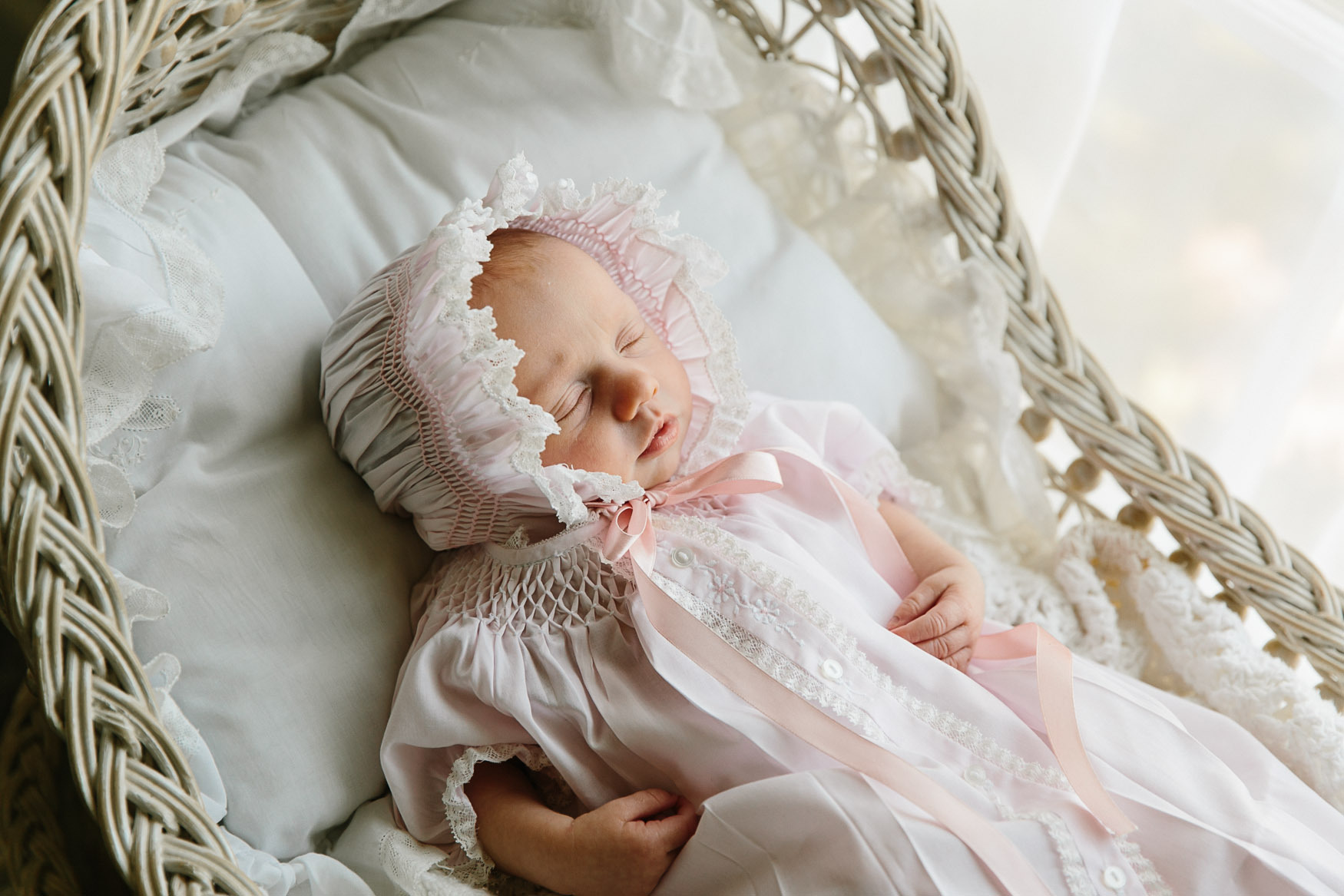The Timeless Charm of Baby Day Gowns: A Look at Their History and Purpose
Posted by Feltman Brothers on 17th Jun 2025
When you picture a newborn in vintage photographs — swaddled in soft white fabric, delicate lace, or gentle embroidery — you’re likely seeing a baby day gown. This classic garment has dressed generations of infants, blending function with tradition in a way that still touches hearts today. But where did the day gown come from? And do babies still wear them today? Let’s take a closer look at the history of day gowns and some of the questions parents often ask.
What is a day gown?
A baby day gown is a long, flowing garment traditionally worn by newborns.

A Brief History of the Day Gown
The concept of dressing infants in long gowns dates back hundreds of years. In medieval Europe, both baby boys and girls were wrapped or dressed in long, robe-like garments that helped keep them warm and protected. At a time when houses were drafty and central heating didn’t exist, warmth was a matter of survival.
By the 18th and 19th centuries, the day gown had become a distinct part of a baby’s wardrobe in Western culture. Made from soft white fabrics like linen, muslin, or cotton, these gowns were designed to:
-
Make diapering (or changing cloths, in pre-diaper days) easier.
-
Keep babies warm by covering their feet and legs.
-
Symbolize purity and innocence — white was the color of choice for newborns, representing new beginnings.
In the Victorian and Edwardian eras, day gowns became more ornate. Hand-stitched lace, tiny tucks, pintucks, and embroidery turned these simple garments into heirloom pieces, often saved for portraits, christenings, or passed down through generations.
Today, day gowns still have a place in the modern nursery, prized for their beauty, comfort, and timeless appeal — especially for special occasions or the first weeks at home.
Why Are Baby Day Gowns So Long?
The extra length on a day gown wasn’t just for style. It served several purposes:
-
Warmth: The longer length helped keep babies cozy, especially when blankets weren’t as plentiful or reliable.
-
Practicality: Long gowns made diaper changes quicker, as caregivers could simply lift the hem rather than unfasten multiple layers.
-
Growth room: The gowns could fit babies for several months without needing replacement.
Common Questions About Day Gowns
What is the difference between a day gown and a christening gown?
A christening gown is typically much more formal — often longer, heavily embellished, and reserved for the baptism ceremony itself. A day gown, on the other hand, is for regular daytime wear, though it can still be beautiful and detailed.
Are day gowns just for girls?
Not at all! Traditionally, day gowns were worn by all babies, regardless of gender. In fact, until about age 2 or 3, baby boys and girls in many cultures wore similar gowns or dresses.
Can a baby sleep in a day gown?
Day gowns were designed for waking hours, but many newborns did nap in them. However, today’s safe sleep guidelines recommend fitted sleepwear (like a sleep sack) for overnight use to reduce the risk of entanglement.
Are day gowns still practical today?
For newborns, day gowns can still be a wonderful choice. Parents love them for:
-
Those early days when diaper changes are frequent.
-
Newborn photos or coming-home outfits.
-
Heirloom gifts or keepsakes.
What fabrics are best for day gowns?
Soft, breathable fabrics like cotton, muslin, or linen are ideal. These natural fibers are gentle on a baby’s skin and help regulate body temperature.
When do babies stop wearing day gowns?
Most babies wear day gowns for the first few weeks or months — typically until they begin kicking actively or outgrow the length.

Day Gowns in Modern Life
While modern babywear favors onesies, sleepers, and footies for daily use, day gowns have never fully gone out of style. Many parents choose them for:
-
Coming home from the hospital
-
Baby dedications or blessings
-
Photo sessions
-
Gifts that become family heirlooms
There’s something magical about a baby in a day gown — a little thread of history woven into those early moments.
The Legacy Continues
Whether simple or elaborately embroidered, the day gown is a reminder of how tradition and practicality can go hand-in-hand. If you’re drawn to their timeless charm, you’re in good company — generations of parents have chosen day gowns as a gentle first wardrobe for their little ones.
Discover the heirloom quality of Feltman Brothers day gowns.
Each piece is crafted with the same attention to detail that’s made Feltman Brothers a cherished name for over 100 years — from delicate hand-embroidery to classic vintage styling. Perfect for your baby’s first days, coming-home outfit, or a keepsake to treasure forever.


